The new wave of plant conservationists in the Balkans
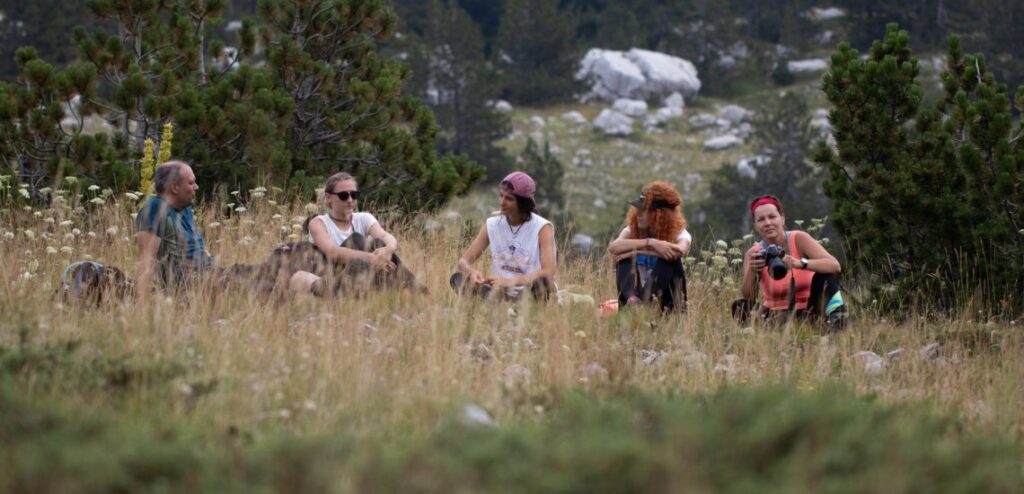
Move over bearded botanists: a new generation of young expert plant scientists are scaling remote Balkan mountains to save extremely rare plants found nowhere else – some with ranges smaller than a football field
By Shaun Hurrell
Header Image: Research team © Mihailo Jovićević
At 1700 m altitude, on a jagged limestone ridge often used for training by alpinists, a group of young researchers are clinging to tufts of grass and sharp rock as they scramble straight down the steep mountainside of Mount Orjen, which straddles the border of Montenegro and Bosnia & Herzegovina. What brings them here, with no ropes, one misplaced step away from tumbling to peril? In a word: plants. In practical terms, they’re undertaking a transect, recording population, habitat and threat data, and collecting vital seeds. But the underlying reason they’re here: pure passion and enthusiasm for conservation.
Such is the new wave of plant conservationists in the Mediterranean, and particularly in the Balkans. Stereotypically, the study of plants has been seen as a niche domain of aging, bearded botanists with a focus on scientific research and natural history. Whilst such a botanist could well be found on a steep mountainside, there’s a fresh generation of plant experts that use research as one tool of conservation. Driven by local NGOs like EnvPro and E-grupa on Mount Orjen, they will do what it takes to see threatened endemic plants protected.
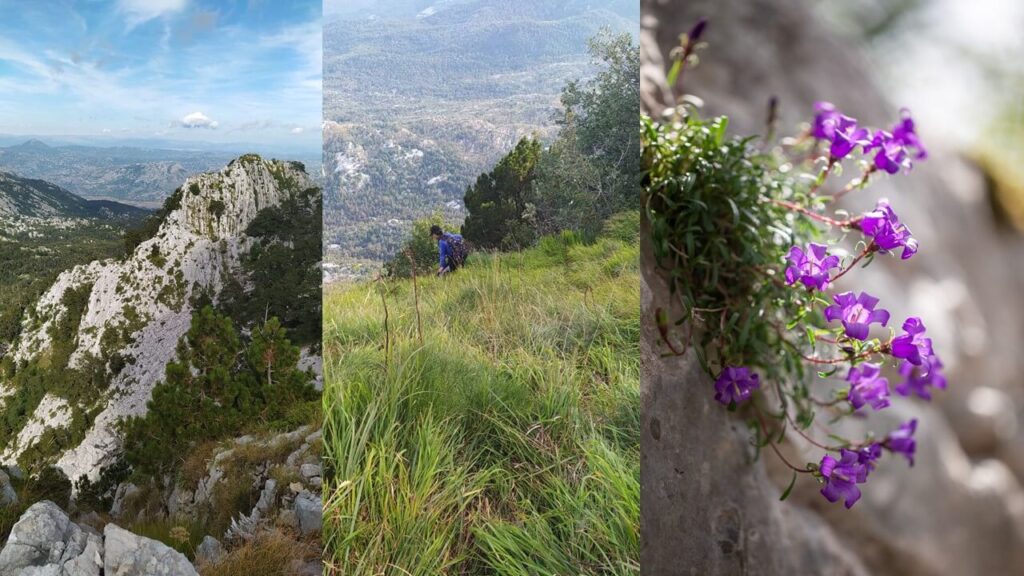
With many straight out of University, it’s not easy to begin a career in conservation. But BirdLife (through its role as Regional Implementation Team for the Mediterranean hotspot of the Critical Ecosystem Partnership Fund (CEPF)*) has been able to provide small grants to local NGOs, which can allow them to employ and train such eager, talented people. In total, 14 small grants (and one large grant) have supported 15 civil society organisations in four Balkan countries since October 2018.
Not only is plant conservation new-school, it’s important. Plants underpin the food chain, endemic plants support endemic insects, and the Mediterranean region biodiversity hotspot is ranked third-richest in the world in terms of its plant diversity. Some remote areas of Balkans are not properly surveyed and Mount Orjen is the only place where some endemic plant species are still found, such as the beautiful Orjen Iris Iris orjenii which hangs on in just a few sites, nestled within patches of long grass.
It was here that EnvPro and E-grupa revealed additional sites of the iris and confirmed its presence on the Bosnian side. The data gathered also allowed them to assess the species on the IUCN Red List as Endangered, as well as an endemic short-toothed sage Salvia brachyodon as Critically Endangered, and capture important habitat data for other endemics such as Edraianthus serpyllifolius.
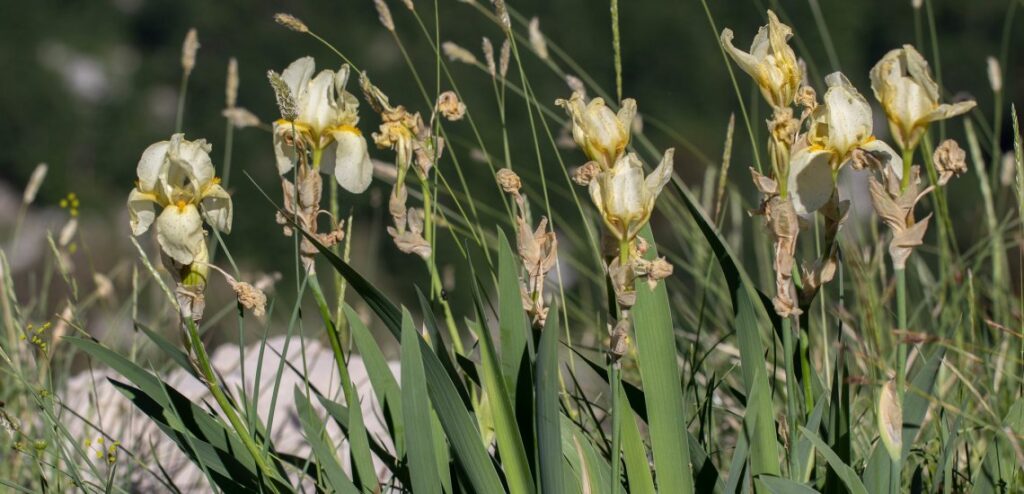
Every seed counts
Perhaps taking inspiration from the way the roots of the endemic Bosnian ‘munika’ pine trees grasp bare rock, newly-employed Marija Popovic holds on tight as she peers over an edge looking for any signs of seeding plants. EnvPro are collecting seeds from all target species for a seed bank kept at the University of Primorska, but it’s especially vital for the iris because the team are working with the Natural History Museum in Rijeka to grow seedlings (ex-situ conservation) which will be planted back in the wild.
Collaboration is a major theme in this movement, which aims to build a network of plant conservationists in the region, leading to better conservation management overall. Throughout the project, EnvPro (from Montenegro) have been helping build the skills and expertise of the Bosnian-based E-grupa, skills that have already led to a major success: plant data submitted helped form the basis of the case for a new protected area on the Bosnian side of Mount Orjen (declared in September 2020), which will help secure a safe future for the plants surveyed there. The Montenegrin side is already officially protected, but the EnvPro project is also aiming to improve the management of Orjen Nature Park for plants. They’ve also worked with the local mountaineering club to redirect a portion of a hiking trail that was heading through a patch of irises.
Balloons to protect bells from fire
This kind of work is also featured in another plant project in Montenegro, where the Lovćen Bell Edraianthus wettsteinii subsp. lovcenicus, a small perennial plant with tufts of grassy leaves and fine, blue, bell-shaped flowers, has its entire range restricted to an area smaller than a football field. Here, on Mount Lovćen, just outside the border of Lovćen National Park, young plant conservationists aren’t just becoming effective experts, they’re also bringing new and creative ideas.
Living Green, a local NGO, has found an innovative way to protect the plant from the threat of fires: water balloons. They’ve installed biodegradable water bags to ensure the plants get an instantaneous dousing, and water canisters coupled with workshops with the local fire brigade, park rangers and local landowners allow for a quick reaction to fire in this dry area, eight kilometres from any other water source. There have been no fires since, and Living Green continue to work on the other aspects of their project: raising awareness of the importance of the plant and work with the National Park to see its range increase.
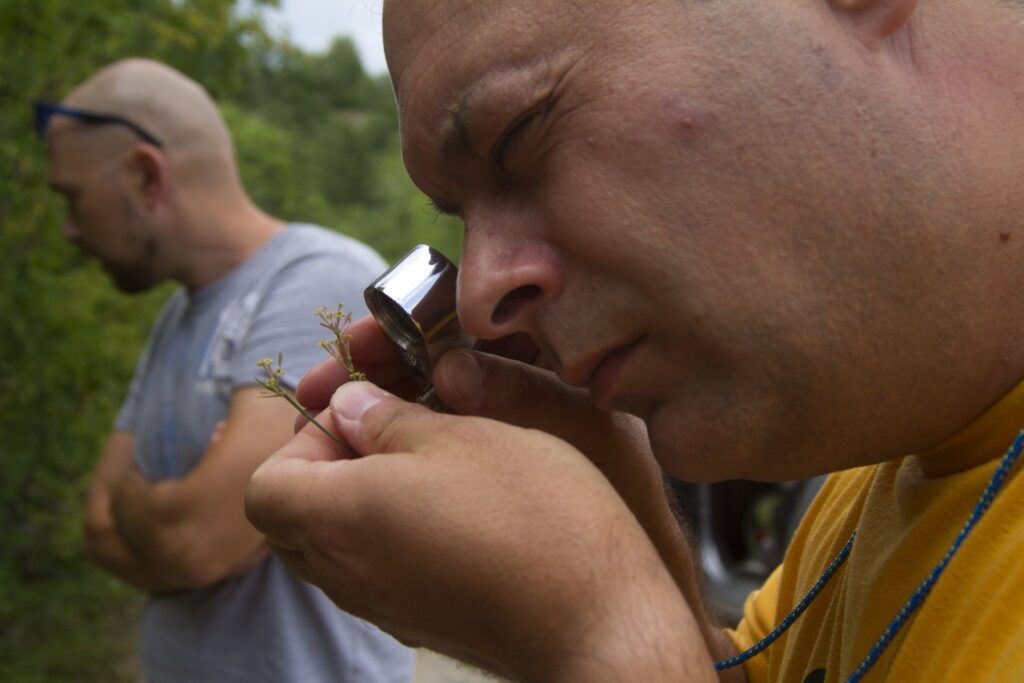
Albania’s red iris threatened by mining
Elsewhere, in Albania, a stunning fire-red-and-yellow native tulip species Tulipa albanica is restricted to an extremely small range in a landscape rife with mining activity. The Institute for Environmental Policy (IEP) have been working to discover all of the remaining plants – yes, all of them (the population is so small it’s possible to count them all) with the aim of protecting its habitat, whilst nurturing a new generation of skilled and professional botanists to work on the protection of other endemic plants in the future. Despite the species only being discovered in the last decade, the tulip is now the official emblem of the local town of Kukës – testament to IEP’s outreach work, and in April 2020 the Municipal Council approved the formal protection of the Albanian Tulip at the local level. Meanwhile the energetic team have been digging their spades into scientifically selected soil to create four new terraces a few kilometres away from the original locality and planted tulip bulbs giving great hope for the future of one of the region’s rarest plants.
From Bosnia & Herzegovina, Montenegro, Albania and North Macedonia [see below], the new generation of plant conservationists are now equipped with expertise in data collection, fruitful collaborations across borders and with institutions, and great awareness-raising skills. And above all, a passion and love for plants. With all that supporting them on a remote mountainside, who needs ropes?
Four countries, 15 projects for plants
Innovations across the border
The first ever seed bank of wild flora in North Macedonia was collected by MASA, with 90% from rare and endemic species; whilst ILIRIA (from Albania) used a drone to record focal species growing on steep cliffs. These two grantees are working in the National Parks of Galicica and Prespa in a collaborative project.
Large grants for rare plants
MES (BirdLife in North Macedonia) are assessing threatened plants in the Jablanica and Dojran Lake areas and setting up a monitoring system. They’re also supporting protected area managers and local organisations, and work with biology students on chestnut distribution (including using a drone).
Ex-situ ponds
Macedonian Biological Society is also assessing endemic plants with restricted habitats from Galichica – including collecting seeds, which they’ve planted in newly updated facilities in the Botanical Gardens of Skopje (including a lake for a rare water lily). Meanwhile, they’re training local students and young experts and raising awareness in the local community.
Assessing the threats and conservation needs of plants in Orjen Mountain Nature Park is just one part of NGO Environmental Programme’s project that aims to identify management guidelines for the long-term conservation of the most rare, endemic and threatened plant species. As part of our Lessons Learned series to share advice from civil society organisations, here’s some conservation insight from Dr. Boštjan Surina, project lead expert at Natural History Museum Rijeka, one of the project partners:
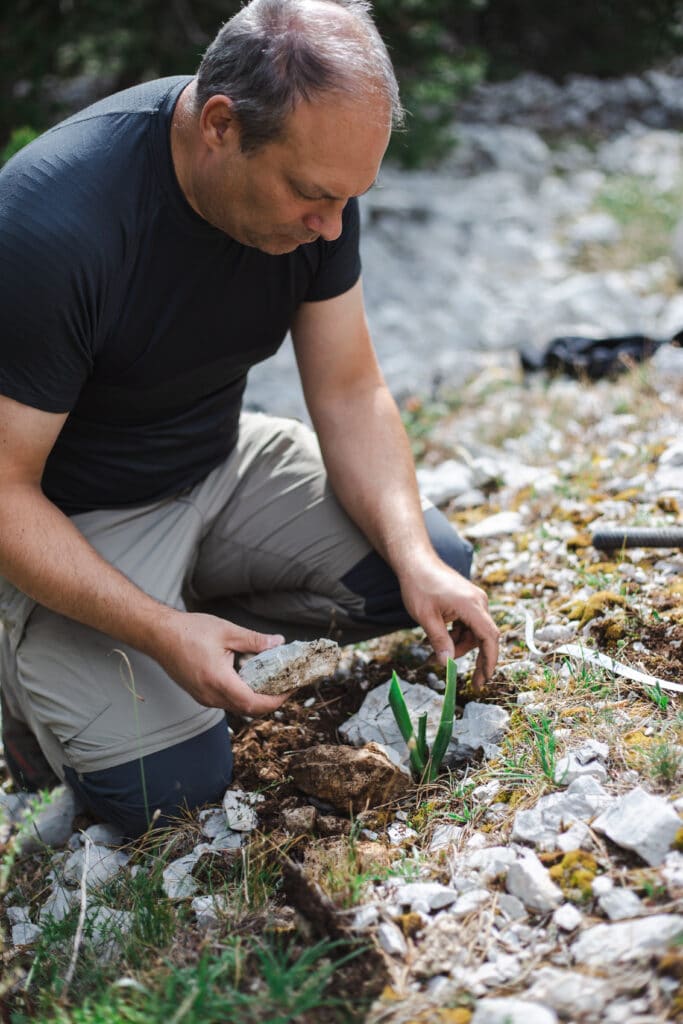
Your project is tackling an important conservation problem. What inspired you to find a solution?
First, several critically endangered plant taxa in our region urgently need attention and we are pleased to have realized the opportunity to deal with some of them in the southeastern Dinaric Alps under the “Conservation of Endemic, Rare and Threatened Plant Species on Mt. Orjen, Montenegro”, project. Then, we urgently need an example of standardized conservation practices implemented in our area to use as a cornerstone that would set the scene for future similar projects. Implementing a simple but fundamentally sound and scientifically based approach to the application of conservation techniques that would provide positive and trackable long-term results through monitoring programs. Last but not least, recruiting and training young and motivated naturalists in the search for theoretical and practical solutions for plant conservation was one of the crucial goals of the project.
Tell us one big lesson that you’ve learned from this project.
In the in-situ and ex-situ conservation efforts for our flagship plant of the main focus, we encountered some problems that we did not expect. Only a few specimens of Orjen iris (Iris orjenii, Bräuchler and Cikovac) bore fruit, while the majority of seeds were aborted. Germination of the remaining seeds was also unsuccessful. Nevertheless, we managed to propagate the plant vegetatively and successfully conducted the translocation of several specimens on suitable sites. The important take-home message is that each plant system is unique, and the toolbox for conservation should be appropriately adapted.
Given your experience working on this project, what advice would you have for another conservationist in the Mediterranean who is just starting out?
Our main message would be that you should know the plant system you are dealing with inside out. Regardless of how the ongoing activities evolve and sometimes the plants’ biology takes us by surprise, adapt to it and the conditions in the field while keeping the right objectives and team enthusiasm.

*The Critical Ecosystem Partnership Fund (CEPF) is a joint initiative of l’Agence Française de Développement, Conservation International, the European Union, the Global Environment Facility, the Government of Japan, and the World Bank. Additional funding has been provided by the MAVA Foundation. A fundamental goal is to ensure civil society is engaged in biodiversity conservation.
CEPF is more than just a funding provider. A dedicated Regional Implementation Team (RIT) (expert officers on the ground) guide funding to the most important areas and to even the smallest of organisations; building civil society capacities, improving conservation outcomes, strengthening networks and sharing best practices. In the Mediterranean Basin Biodiversity Hotspot, the RIT is entrusted to BirdLife International and its Partners: LPO (BirdLife France), DOPPS (BirdLife Slovenia) and BPSSS (BirdLife Serbia).Find out more at www.birdlife.org/cepf-med




